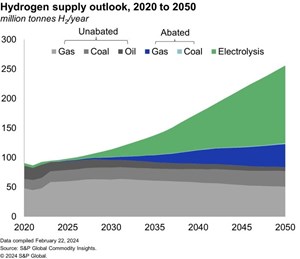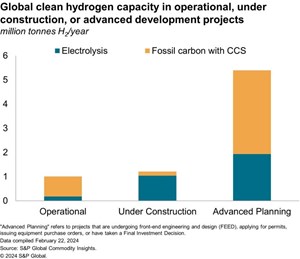News
Open Hydrogen Initiative unveils open-source toolkit to measure H2’s carbon intensity
The Open Hydrogen Initiative (OHI) announced a first-of-its-kind open-source toolkit aimed at furthering transparency into the environmental impact of H2 production. This toolkit, which will help to unlock H2’s full potential as a fuel alternative and important driver of energy transition, was unveiled by founding partners GTI Energy and S&P Global Commodity Insights, and a cohort of collaborators from a diverse field of industry, academic and scientific experts worldwide. This industry-leading toolkit for measuring carbon intensity is available on an open-source basis.
As evidenced by key international discussions at COP28, H2 remains one of the key pathways to energy transition and global decarbonization goals. The OHI toolkit facilitates solutions towards these goals.
OHI has gained industry and marketplace momentum since its launch in late 2022. In addition to its initial Foundational Sponsors, National Grid, Capgemini, EQT, EY and Shell, the international cohort has expanded to more than 40 organizations spanning a wide array of sectors and geographics.
“The OHI toolkit offers open and auditable emissions accounting to help companies and governments understand the tradeoffs between the cost and environmental impacts of H2,” said Paula Gant, Ph.D., President and CEO of GTI Energy. “We are proud of this collaboration which brings together technical expertise, real-world insights, and decades of experience to help the market connect demand for low-carbon energy with suppliers and investments that will spur the H2 economy.”
“Regulators, international agencies and market participants all recognize that tools that drive deep and detailed understanding of carbon intensity are a vital part of the development of carbon differentiated commodity markets,” said Alan Hayes, Head of Energy Transition Pricing and Market Data at S&P Global Commodity Insights. “Understanding a commodities decarbonization potential via its carbon intensity and having the tools and data to assign a dollar value will play a central role in helping markets deliver a low carbon economy.”
The OHI toolkit has been demonstrated in 13 industry projects spanning two continents and contains detailed analyses for more than 200 technologies across 270 countries and regions of the world. It is the most comprehensive open-source H2 life cycle assessment (LCA) toolkit available to the market, setting a new standard for quantifying trust in data.
The need to understand carbon intensity across commodities and related markets is being put at the center of regulations around the world. Mechanisms such as the Inflation Reduction Act in the U.S., support mechanisms in the EU, and emerging contract for difference schemes in parts of Asia all incorporate a detailed understanding of the carbon intensity associated with each potential production pathway.
This toolkit delivers on the initial mission of OHI, to create an industry-led objective, credible, and harmonized methodology and toolkit for measuring the carbon intensity of H2 production at the facility level to lay the foundation for a low-carbon H2 marketplace.



